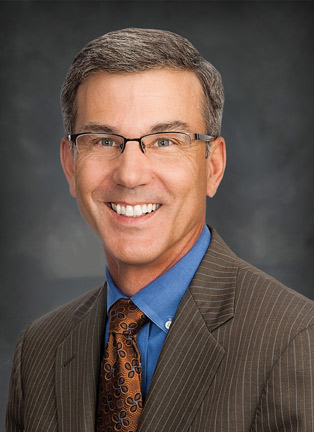
Hattie, 82, had suffered a severe stroke and was discharged to a skilled nursing facility (SNF) following her acute-care stay. As is common in this situation, her husband was given only 24 hours of notice to select an area facility from a list the hospital provided.
Overwhelmed by the decision and given little guidance, it took her spouse and their son two days to select a location that met Hattie’s needs and could accept her.
During transport from the hospital, Hattie’s medical records were literally placed in her lap and then handed to someone at the SNF when she arrived.
Prior to her arrival, the receiving facility had no meaningful knowledge of her clinical needs; therefore, no orders. Her medication list, physical therapy needs and regimen, and speech therapy hadn’t been delivered to the physician on duty at the nursing facility.
Within the first 24 hours of admission, the only interventions she received were prescriptions her spouse had brought with him from their home, which she had been taking before and during her hospital stay.
Transitions Need Monitoring
Checking out of a hospital and entering another facility can pose some challenges. With the recent changes in reimbursement policy, however, hospitals have become increasingly invested in their patients’ post-acute care.
Risk migration from payers to providers, for instance, has driven hospitals to improve their discharge processes and continue following patients in the post-acute setting in an effort to prevent avoidable readmissions and, ultimately, promote better patient outcomes.
Despite the increasing prevalence of technology in hospitals, the discharge process remains predominantly manual, and many organizations still rely on inefficient phone calls, faxes, and the exchange of paper-based records to coordinate transfers and provide crucial patient information to post-acute settings.
Rather than using traditional discharge methods, hospitals and post-acute care facilities can leverage technology to streamline and automate the discharge process, ensuring that patients are placed in the appropriate care settings and post-acute providers have all the necessary information to care for patients—prior to their arrival.
Planning Can Pinpoint The Best Next Stop
When a hospital has discharge technology and is preparing to release a patient, the discharge planner inputs the patient’s parameters into the system, including geographic requirements, dietary needs, required treatments or therapies, insurance providers, and specific conditions.
The criteria are then submitted to participating post-acute facilities that have the opportunity to respond to whether or not they can accept the patient.
Discharge technology certainly would have made Hattie’s transition more efficient and less disruptive to her continuum of care. For instance, the hospital discharge planner would have keyed in that she was recovering from a stroke and needed physical and occupational therapy multiple times per week.
Sending out this comprehensive profile would have quickly narrowed the field of appropriate organizations to three—as opposed to the long list provided by the hospital.
Hi-Tech, High Rewards
When hospitals and the post-acute community leverage discharge technology that automates, streamlines, and helps coordinate the transition process, everyone wins—the hospital, the patient, and post-acute providers.
Specifically from the post-acute perspective, benefits include:
■ Expediting referrals. Technology can automate several aspects of discharge, enabling hospitals to send out notices to multiple post-acute facilities simultaneously. Receiving organizations can review a notice, along with information extracted directly from the patient’s electronic health record.
By having this level of detail up front, post-acute providers can make more informed decisions as to whether they can accept a patient.
■ Having the right information to make the decision. With pressure on hospitals to be mindful of length of stay, post-acute facilities are receiving more patients who are sicker or further from recovery than ever before.
In some cases, an organization may not be able to adequately address a patient’s clinical needs. By having a complete picture of the patient before agreeing to provide care, the organization can make sure it is appropriately staffed and, if it is not, prevent a situation where the patient has to be transferred again to a facility that more closely matches his or her needs.
■ Focusing human resources where they’re truly needed. By automating the more routine aspects of discharge and making things more efficient, discharge planners on the acute side and administrators on the post-acute side can be more available for situations requiring human intervention.
For example, some post-acute facilities are slimly staffed, particularly for administrative tasks like admissions.
When the discharge effort is automated, it limits workflow interruptions so this individual can focus on admitting patients and getting them adjusted to their new surroundings.
■ Working with existing technology. Typically supported by host hospitals, some discharge technology is available to the post-acute community at no cost and requires no changes to the facility’s technology platform or infrastructure.
Because the technology is accessed through a Web-based portal, post-acute providers need only have a computer and broadband Internet connection to access and interact with the solution.
■ Leveraging opportunities for improvement. When hospitals use automated discharge technology, it allows them to collect data and assess the performance of the post-acute community. This information can enable meaningful dialogue between hospitals and post-acute providers around areas of opportunity.
For instance, if a SNF has a strong neurological recovery program but is weaker with orthopedic recovery due to patient falls, the organization can work collaboratively with a network hospital to improve its fall prevention program, raising the bar for the entire post-acute network.
Using technology, hospitals and post-acute facilities alike have an opportunity to draw the continuum closer and ensure patients receive the right care in the right setting at the right time, ultimately realizing better outcomes for patients such as Hattie.
Wayne Sensor, MBA, is chief executive officer of Ensocare. He can be reached at ceo@ensocare.com or via Twitter @EnsocareCircle.